Wouldn’t it be nice if you could rank at position zero in Google? Is this even possible? The answer is yes, and that’s through ‘Google Featured Snippets’.
In this post, you will learn the different types of featured snippets and how to optimize your content so that it’s eligible to show in Google’s featured snippet box.
What Are Featured Snippets?
Featured snippets are special content blocks extracted from a webpage that directly answers a user's search query. They are displayed at the top of the search results and can be in the form of a paragraph, a list, a table, or even a video. Featured snippets can also appear within the "People Also Ask" section.
Why Are Featured Snippets Important?
There are many reasons as to why you should optimize your content for featured snippets. The most significant are:
- Websites appearing in the featured snippet box get more clicks and have a higher CTR (Click-through Rate).
- Websites providing featured snippets are considered to be authorities on the topic.
- It's a sign that your content is relevant to user queries.
- It's good for voice SEO.
A word of warning: even if you optimize your content, it’s not 100% certain that you will get a featured snippet entry. As in other things in SEO, optimizing your content for particular search features increases your chances, but that’s not guaranteed.
Types of Featured Snippets
Google uses different types of featured snippets to make the results helpful to users. The most common types are:
Paragraph - This type of snippet provides a direct answer, definition, or explanation in a few sentences. It's typically used to answer specific questions, define terms, or explain a concept.
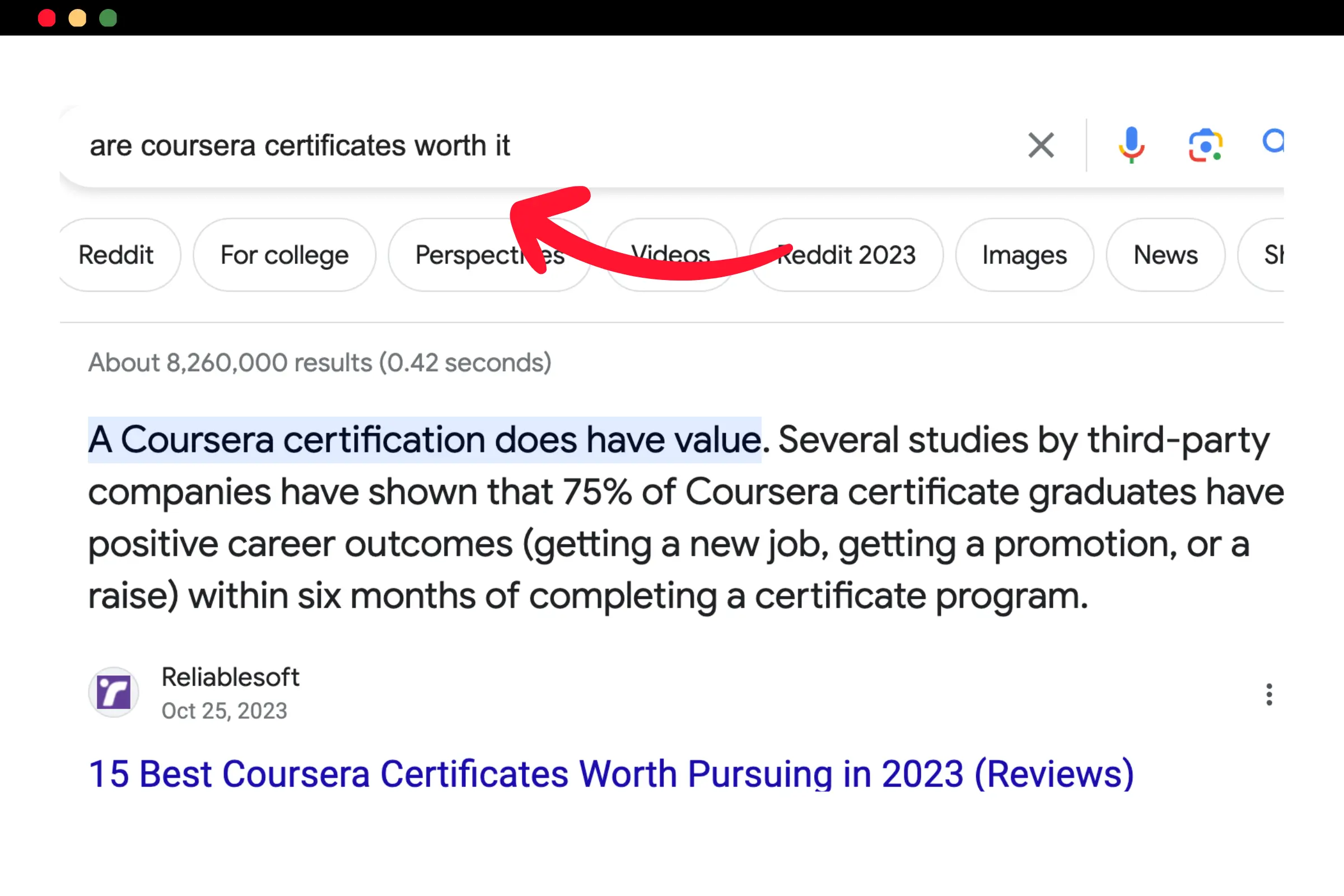
Lists - List snippets display information in a bullet or numbered format. They are ideal for summarizing steps in a process, presenting a series of tips, or showcasing a list of products.
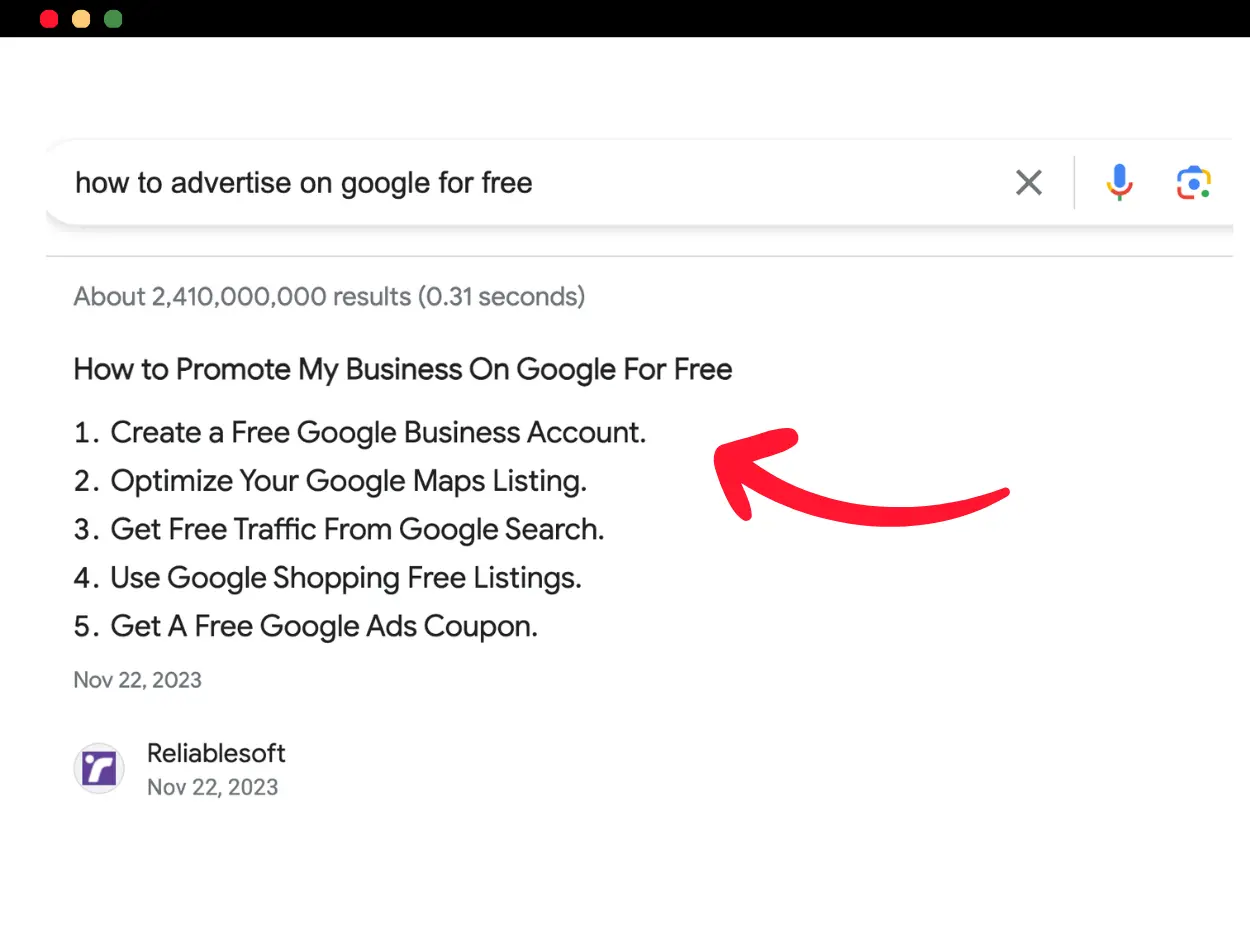
Table - Table snippets present data and information in table format. This feature is used for comparative data, where a side-by-side comparison is beneficial.
Videos - Video snippets usually consist of a video thumbnail and a title. The video is typically a direct response to the search query.
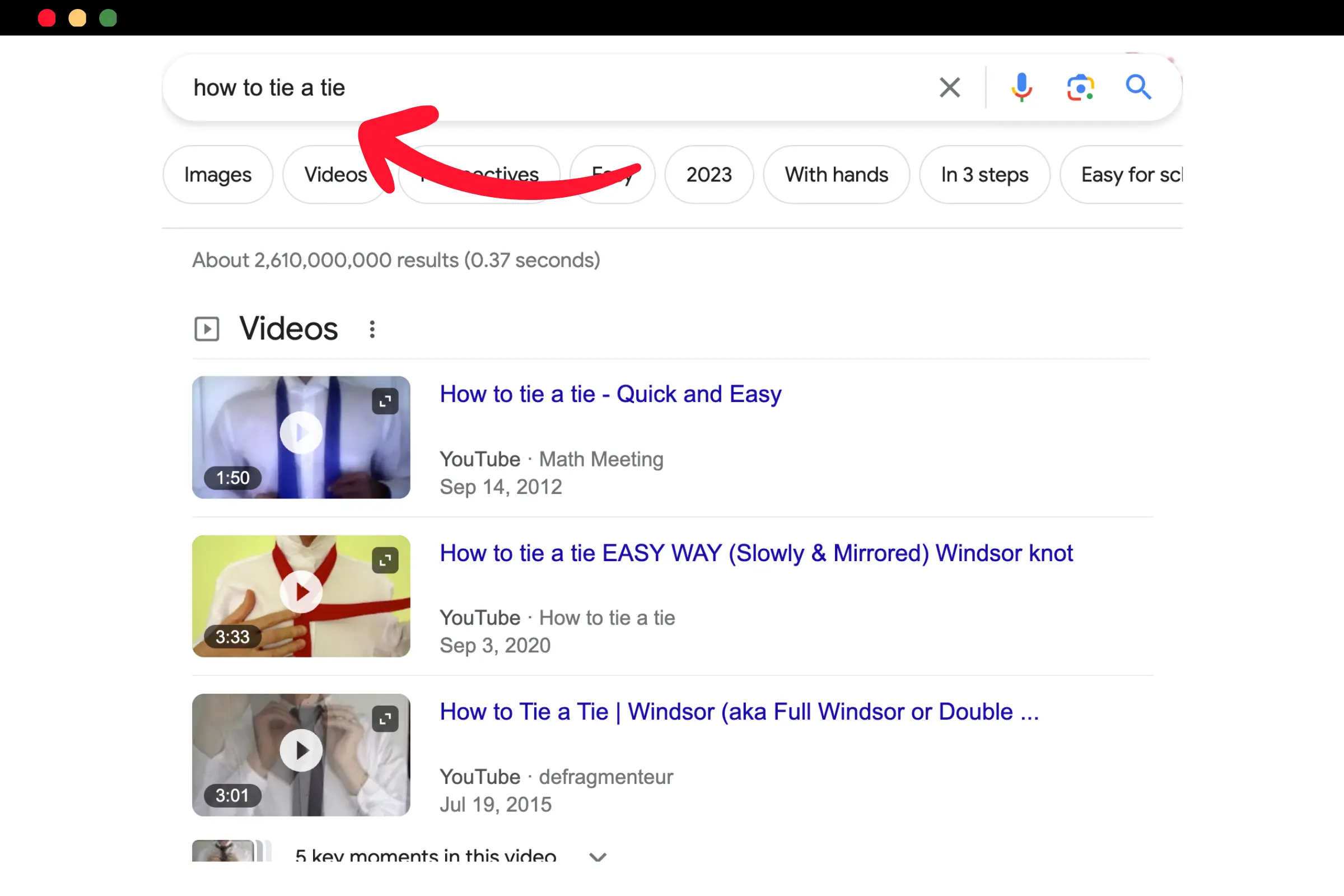
How To Optimize For Featured Snippets
- Find Queries With Featured Snippets
- Optimize For The Featured Snippet Format
- Use Clear, Concise Headings
- Fully Cover Topics
- Avoid First-Person Language
- Don't Include Brand Names or Links
- Use Supporting Data and Images
- Improve Overall Domain Authority
- Earn Featured Snippets For Top-Ranking Pages
- Regularly Update Your Content
1. Find Queries With Featured Snippets
The first step is to find queries for which Google shows a featured snippet. There are five easy ways to do this:
Manually find SERPs with featured snippets - This is the simplest method. Go to Google, search for your terms, and analyze the results. Do this on desktop and mobile as the presentation of search snippets varies.
Use keyword research - A faster way is to use a keyword research tool like Ahrefs or Semrush. These tools have special filters showing which keywords and search phrases lead to featured snippets. Here is an example below:
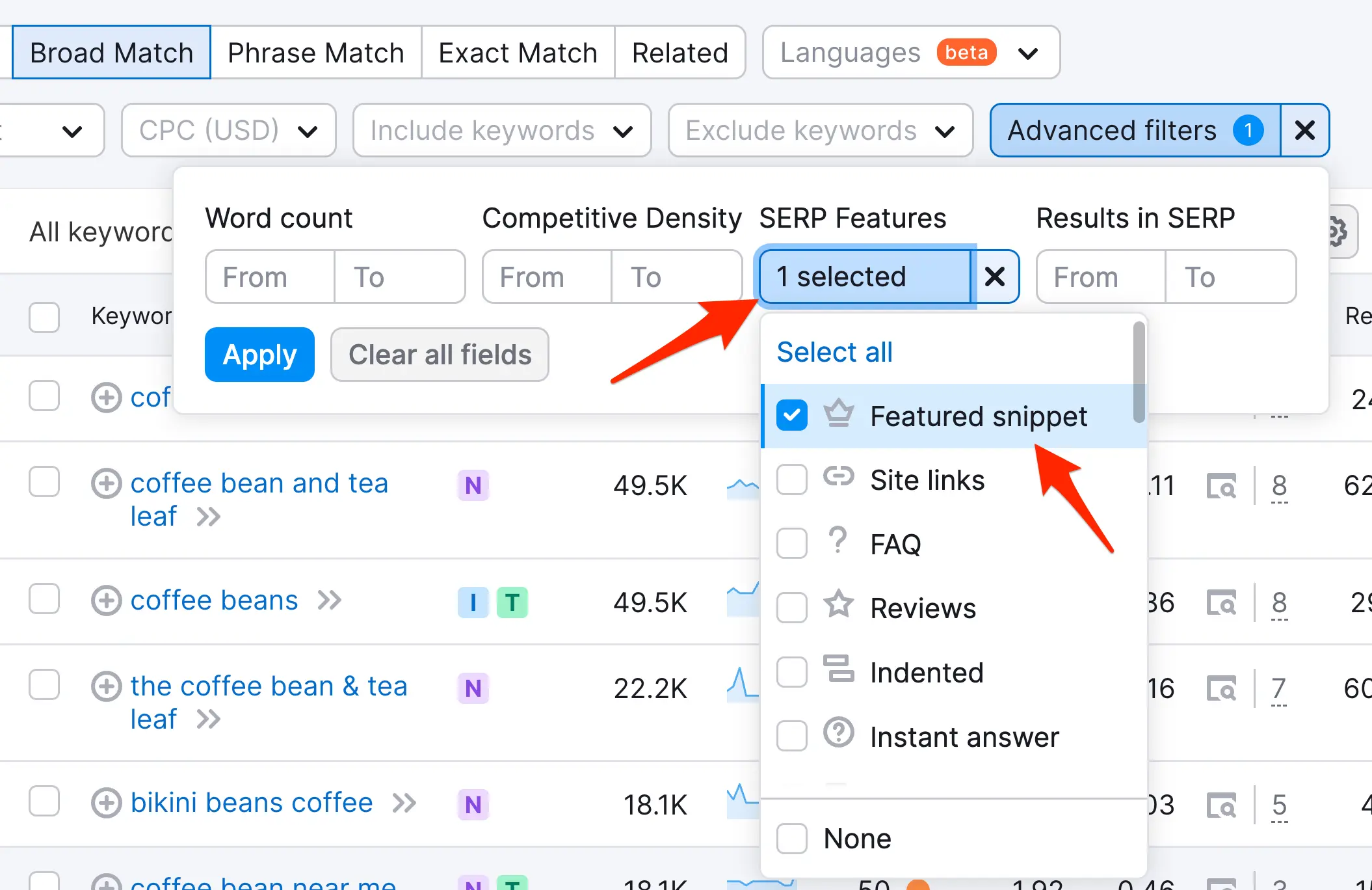
Competitor analysis - This is similar to the above method. You analyze a domain name to find its featured snippets.
Predictions - If you search for a keyword on Google that does not show a featured snippet, it does not mean it won't show in the future. Google constantly reviews its algorithms and rules, including when to show a featured snippet.
You can proactively optimize your content for the different types of featured snippets. We've been using this great technique successfully to get featured snippets for our content before our competitors.
Answer questions that ‘People also ask’ - One of the ways to increase your chances of getting a featured snippet is by providing direct answers to questions people ask on Google. To be more precise, when you type a query in Google, you will see a section called ‘People Also Ask.’ These queries/questions are perfect candidates for getting a featured snippet.
Google shows featured snippets directly in the 'people also ask' section, as shown in the example below:
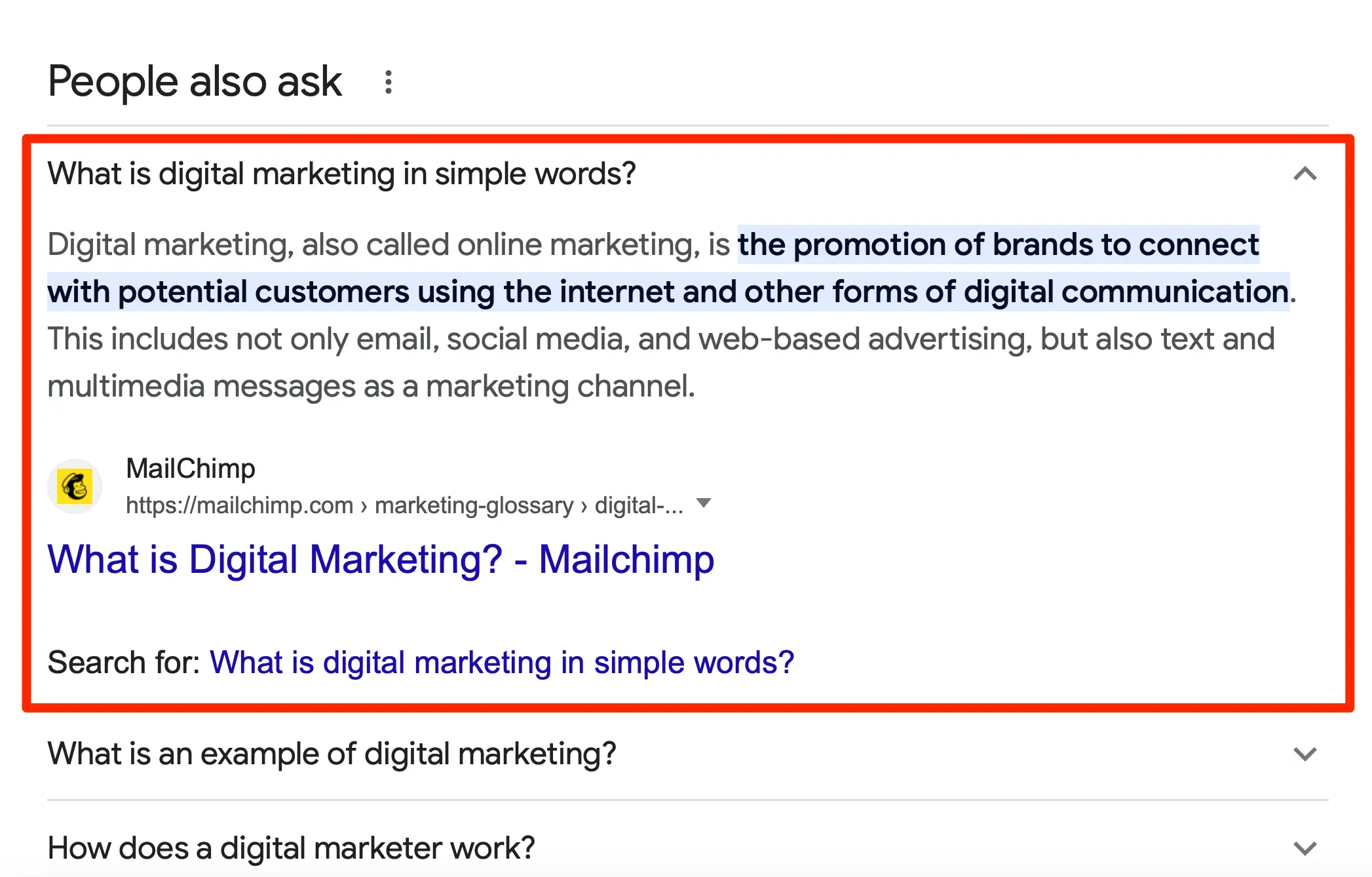
2. Optimize For The Featured Snippet Format
After deciding which types of features snippets to target, the next step is to optimize your content. Follow these guidelines.
For a paragraph or definition - Place the answer to a question or definition above the fold and closer to the beginning of your content with an appropriate heading. Ensure your text is clear, concise, and ideally 3-4 lines. Avoid line breaks or spreading the answer in more than one paragraph. Ensure this section can stand alone as a complete answer to the specific question or definition.
Here is an example of how I optimized this article for the question, "What is the difference between page title and H1 tag?". This is how it looks on Google:
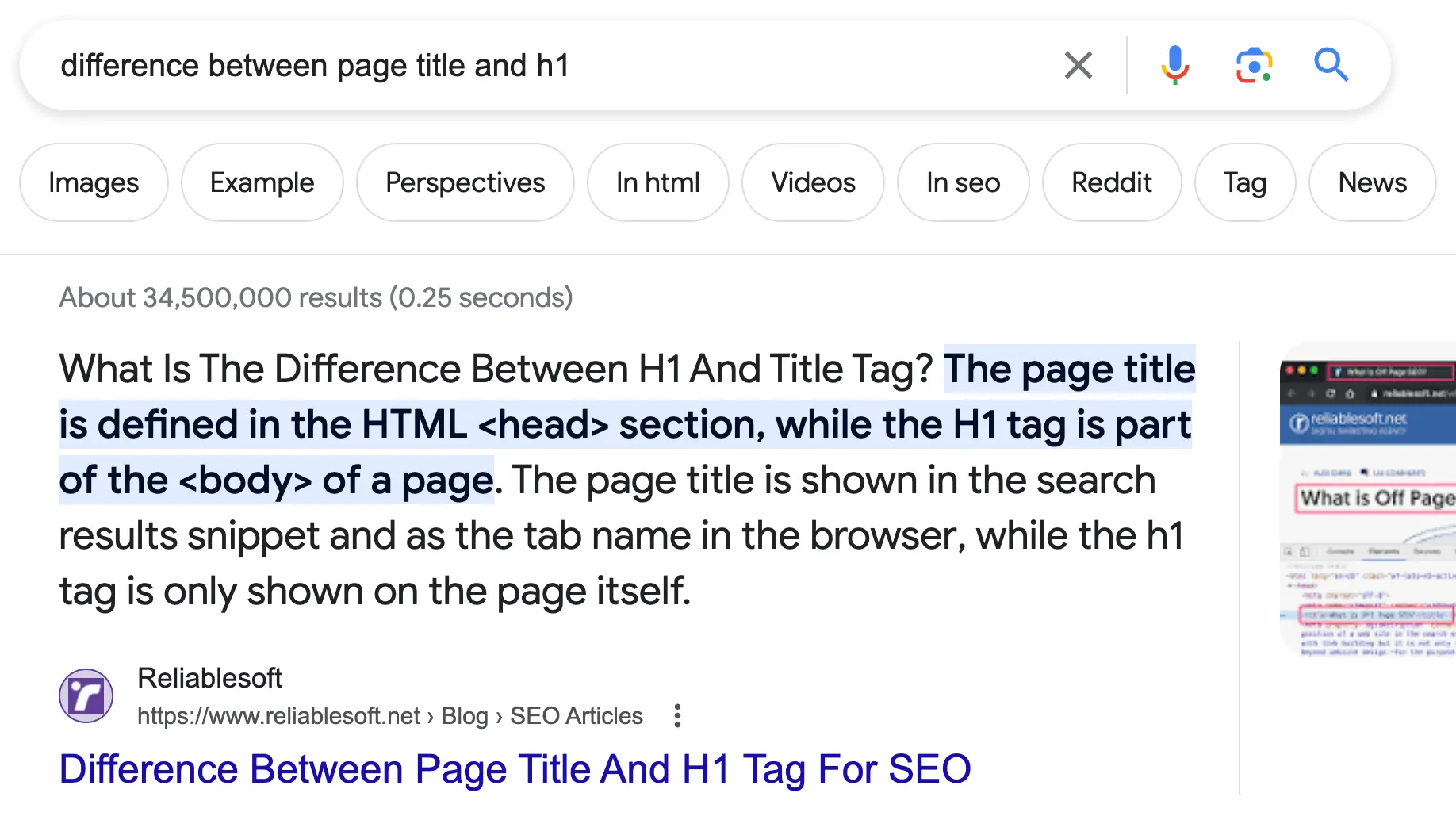
And this is the article content:
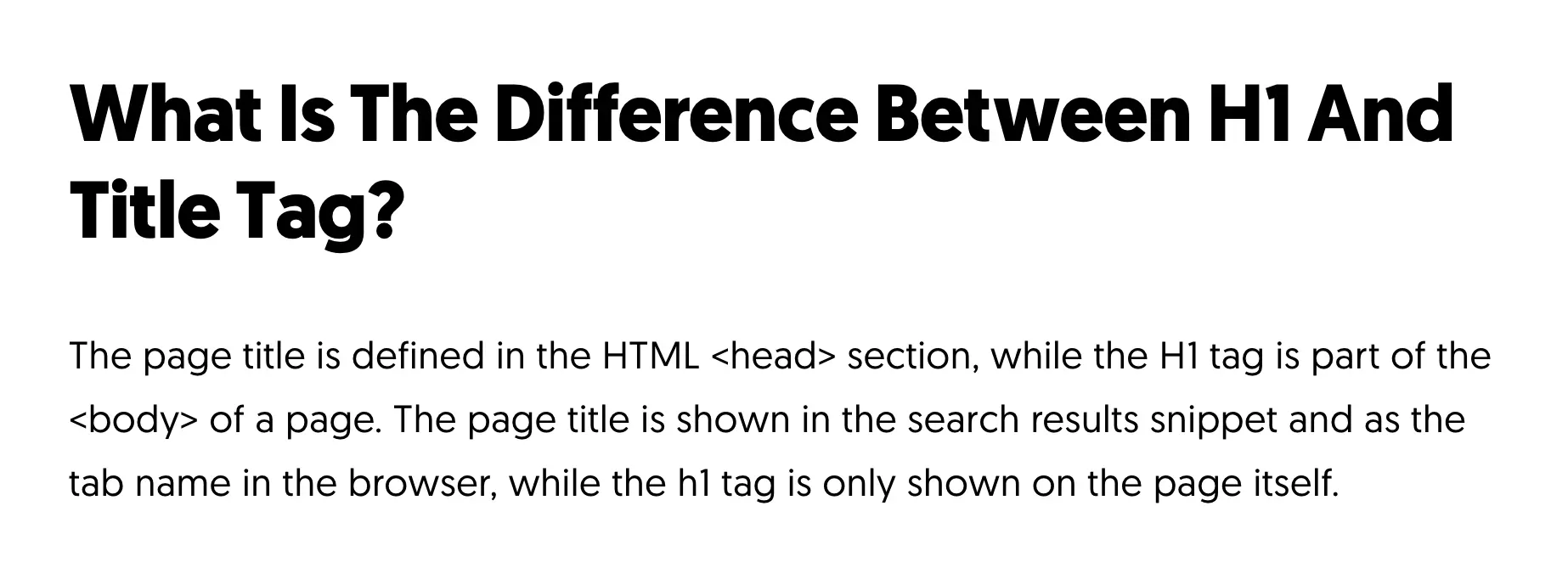
For a list snippet - Create content that includes a list of steps or items in a bulleted or numbered format. For best results, format these items as a list (<ul> or <ol>) and ensure that you use simple and precise language for each item. Keep your item names short and related to the heading or question posed. Place your list high in your content with a relevant heading.
Here is an example of how we format our lists to be eligible for featured snippets. Note that the list heading is an H2, the list items are enclosed in <ul>, and each item heading is an H3.
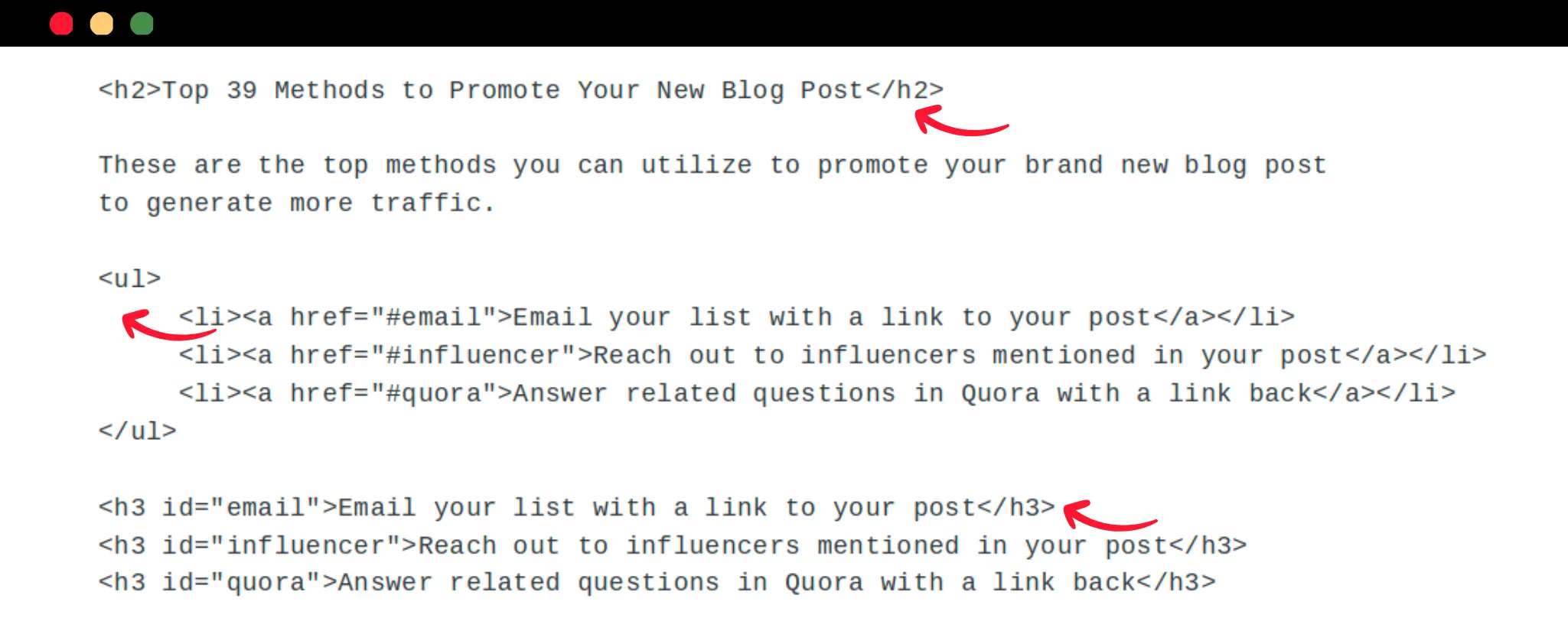
For a table snippet - To increase your chances of getting a table snippet, use clean HTML for the table formatting and use tables with 2-3 columns max. Label each column and row clearly and ensure the information is easily understood.
3. Use Clear, Concise Headings
To achieve a featured snippet, your content must have a clear structure. Best on-page SEO practices, like having one H1 tag for the title of the page and then H2 and H3 for the subheadings together with <p> for the text, are important.
Google must understand a page correctly before extracting text for featured snippets, so making the crawler’s job easier helps in that direction.
Another crucial element is the text you use in your headings. Headings that include the words what is, worth it, what does, how does, why is, who is, where is, and when does can be highly effective.
These phrases directly align with common query formats, making your headings more likely to match user searches.
4. Fully Cover Topics
As mentioned above, you must fully define a topic in 3-4 sentences. Proving incomplete or partial answers won't help you secure a featured snippet. You can search Wikipedia for ideas on what to include in your answers or lists. You can also review what is already ranking and provide a similar but better answer.
Some tips to follow that are proven to work:
- Use "is" at the beginning. For example: "A featured snippet is".
- Ensure the subsequent sentences offer additional relevant details and context.
- Include relevant keywords naturally within these sentences to improve the content's relevance to the query.
5. Avoid First-Person Language
This tip is easy to follow but essential. Don't write in first-person, but use a neutral, third-person narrative. Use formal language with a professional tone that is easily understandable by users.
For example, don't write "My recommended SEO practices are..." but use "The recommended SEO practices...."
Focus on stating facts and providing information directly rather than sharing personal opinions or experiences.
6. Don't Include Brand Names or Links
Google will not show a featured snippet with text containing your brand name or other brands. The only exception is when you create lists, which are expected to show different brands as list items.
We also did several tests and found that having links (internal or external) in the text you want to rank as a featured snippet is not a good practice.
7. Use Supporting Data and Images
This may not be the most significant factor, but having at least one image on the page with relevant ALT text helps. Google shows an image next to the text for various featured snippets. The images do not necessarily belong to the same domain but are selected based on the alt text value. Here is an example:
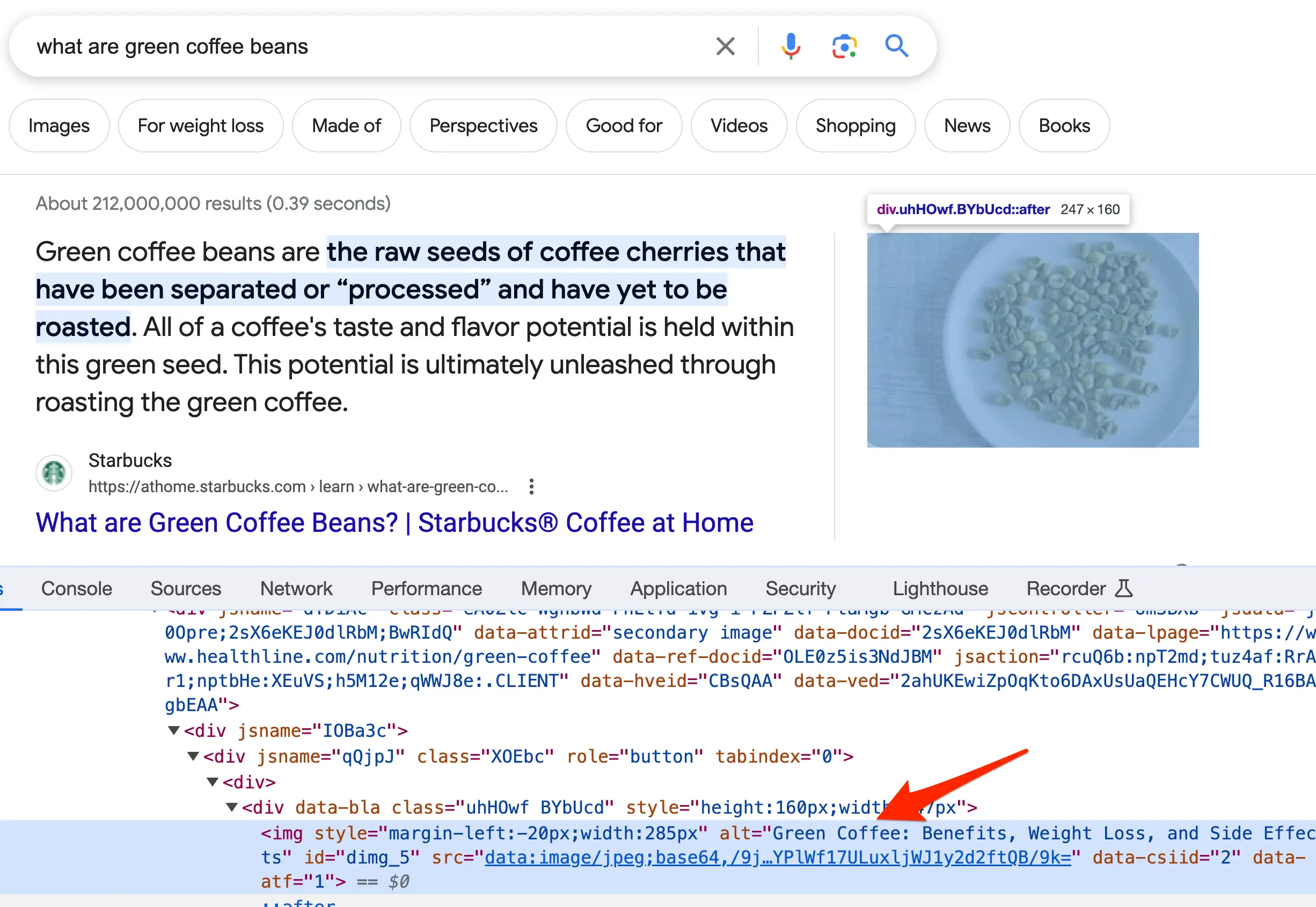
Besides images, your content should provide supporting data to satisfy the user intent. For example, if you're optimizing an article to appear for the term "What is SEO?" besides answering this question, the rest of the article should explain in detail what SEO is and how it works.
Consider what a user might look for when searching for a question, and add this information to your content.
8. Improve Overall Domain Authority
To be eligible to show in a featured snippet, you must rank high in the SERPS but not necessarily at the top positions.
It's important to understand that Google may display a featured snippet from a page that more closely aligns with the user's query, even if it doesn't have the strongest domain authority.
However, any efforts you make to improve your overall domain authority will increase your visibility to Google’s algorithms, making your content a potential candidate for a featured snippet.
9. Earn Featured Snippets For Top-Ranking Pages
The easiest and fastest way to take advantage of featured snippets is to review and optimize your pages that rank in the top 10 positions of Google.
Use your favorite tool to find out which of your pages have a high ranking, and then analyze the type of featured snippet that appears for the queries these pages are ranking for.
Change your content to align with the specific featured snippet format and ask Google to reindex your page.
If you do this successfully (following the above guidelines), you can boost your traffic for the particular pages almost instantly. We do this as part of our regular content audits, and it works great. Here is an example of an article that gained a featured snippet after optimizing the existing content to better match a user's question.
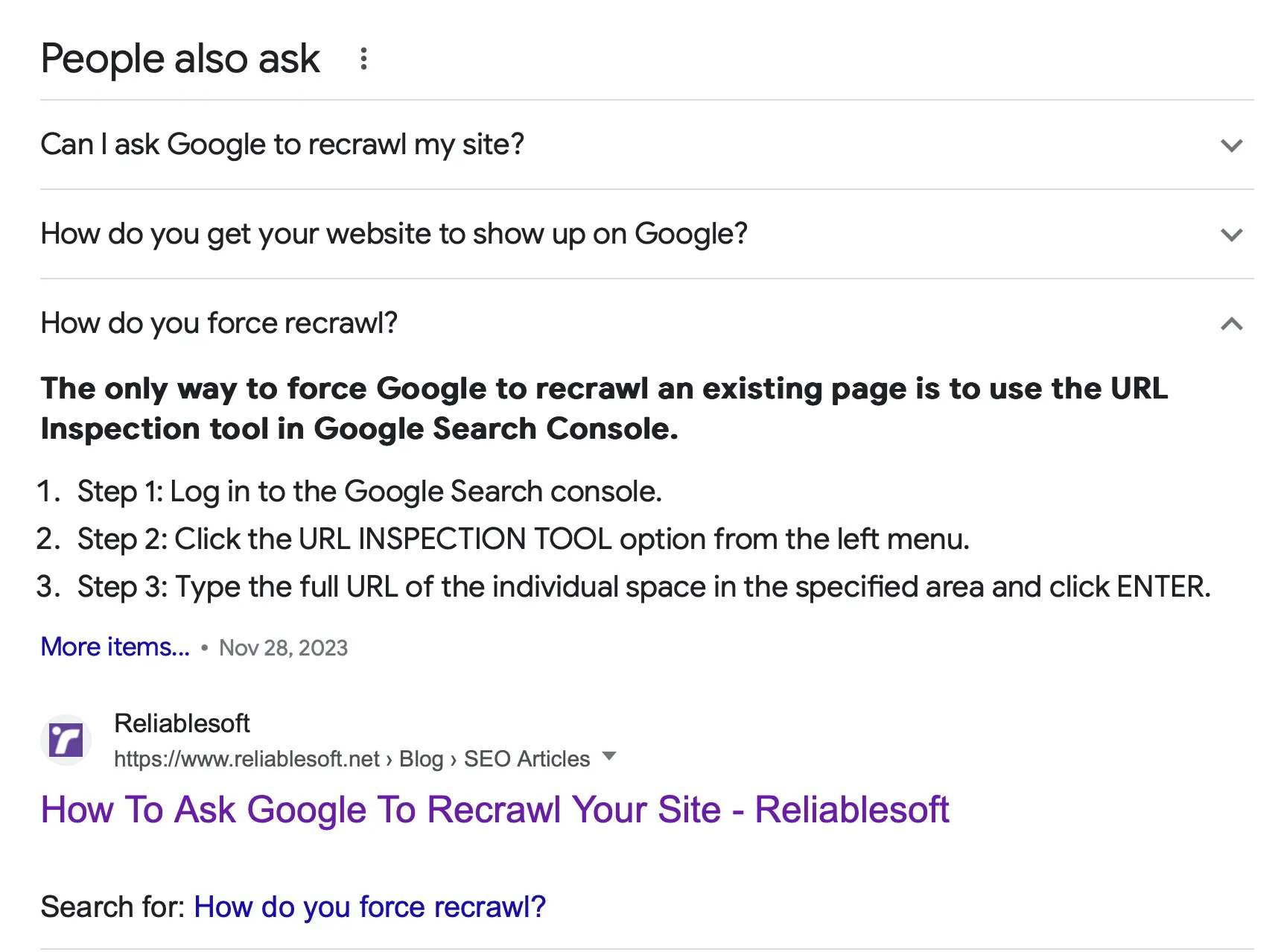
10. Regularly Update Your Content
Google won't extract text and show it as featured snippets from pages that are not updated. The page's information must be accurate and highly relevant to a user's query.
To maintain your snippets, ensure the pages are consistently reviewed and updated. Regularly check and refresh the content to keep it current with the latest information and trends. This could involve updating statistics, adding recent examples or findings, and revising any outdated sections.
By keeping your pages fresh and relevant, you signal to Google that your content continues to be valuable for users, helping to retain or even gain new featured snippets.
Key Points
- Featured snippets can drive more organic traffic to a website since the CTR is much higher than ranking at a lower position than 0.
- If you already have a good ranking for a keyword (positions 1 – 5), your website may be eligible to show in the featured snippet box.
- To increase your chances, provide a direct answer to a question or definition by summarizing it in a couple of lines but within a single paragraph (<p>) tag. The higher you place this paragraph in your content, the better.
- Having an image with relevant ALT text also helps.
- The easiest and fastest way to check if your website has any featured snippet rankings is through Semrush.
- You can opt-out of featured snippets by adding a meta tag to the head of your page.



